Those who habitually frequent Genoa and are familiar with its treasures will certainly feel an unusual sensation as soon as they enter the Scuderie del Quirinale to immerse themselves in the Genoese Superbarocco, as per the title of the exhibition that aligns, in front of the presidency of the Republic, some of the most delightful and brilliant fruits of that fruitful season, which lasted more than a century, that made Genoa one of the most splendid art capitals of the world. The title, only seemingly pop and unthoughtful, plays on the crasis between the definition, famous to the point of stereotype, that Petrarch used in his Itinerarium to describe Genoa (“a royal city, leaning against an alpine hill, superb for men and for walls, whose appearance alone shows it to be lady of the sea”), and the exceptional nature of the material collected. And it is in front of the pieces that curators Jonathan Bober, Piero Boccardo and Franco Boggero have gathered at the Scuderie that one feels a sense of estrangement, if one has long been accustomed to seeing those works among the churches, palaces and museums of their city, sometimes within their original contexts. It is like seeing a group of friends, very attached to their city, on a trip to Rome, and meeting them at the Scuderie is like finding yourself with them on an away trip: pardon the more than trivial, but sincere, comparison.
The curators of Superbarocco, however, have been extremely careful not only to assemble a well-representative selection of what the arts were like in Genoa from the early seventeenth century to the mid-eighteenth century (the time horizon of the review spans Rubens’ visits to Genoa, the first of which dates back to February 1604, and the death of Alessandro Magnasco in 1749), but also not to leave the city of origin unattended: first, because it is true that some milestones can be admired at the Scuderie, but the curators have worked to ensure that Genoa is not left bare of equally foundational evidence. And then, because on the shores of the Ligurian Sea a pendant of Superbarocco was set up, the Palazzo Ducale exhibition entitled The Forms of Wonder, which brought to the city works that are rare to see, either because they are hidden in private collections, or because they are stored in faraway places. So if Rubens’ Saint Ignatius has temporarily moved to Rome, the Circumcision has remained in place. If Magnasco’s Retaining in a Garden of Albaro went to the Scuderie del Quirinale, two key works of his came to the Doge’s Palace, the convicts of Bordeaux and the friars of Bassano. For a departing Giovanni Andrea De Ferrari, the Accademia Ligustica’sDrunkenness of Noah, there is one arriving (and what an arrival: the Saint Louis Art Museum’sAbraham lent to Genoa is one of his best works). And Genoa has also received some works that are even more important than those found in Rome: think of the Ringling Museum paintings by Domenico Fiasella. What’s more, a rich schedule of exhibitions aimed at delving into the Superbaroque period, and capable of prompting repeated returns, has started throughout Liguria. All in all, an important scholarly project to take stock of the Genoese seventeenth century, a great and widespread dissemination tool, which although it found itself stumped, due to pandemic containment measures, by its first stage, the Superb Baroque exhibition that exported works and pun intended to the National Gallery in Washington, the museum together with which the Roman exhibition was built, nevertheless remains a work of great quality and a catalog, that of the canceled U.S. exhibition, to give an account of what the public would have seen across the ocean.
The project, the curators explain, also stems from the observation that few non-Genoese scholars in history have dealt with the Genoese seventeenth century, and that there have been few opportunities to make this heritage known outside its territorial sphere: the last exhibition on the subject was held in 1992 in Frankfurt(Kunst in der Republik Genua 1528-1815). On the other hand, it is also true that local studies on the arts in Genoa in the 18th century were dense and full of high-level results: the names of great scholars such as Ezia Gavazza and Ennio Poleggi, just to enumerate the first two that come to mind, have been joined over the years by generations of younger scholars (some of whom have collaborated on Superbarocco), and a class of very young scholars is being formed with the same passion, dragged along also by the many initiatives (it will suffice to mention Rolli Days) and the many exhibitions that, in recent years, have greatly advanced knowledge about the period (the monographs on artists such as Domenico Fiasella, Luciano Borzone, Sinibaldo Scorza, Domenico Piola, Anton Maria Maragliano, Alessandro Magnasco and so on, and then again the small but very dense exhibitions-focus exhibitions at Palazzo Spinola, those at Palazzo Nicolosio Lomellino and many others). There is therefore in Genoa, and has been for years, a very strong ferment, which has led to tangible results: the most obvious are the vast scientific and popular production (monographs, catalogs, books, essays, articles) born on the Genoese seventeenth century and, an element that certainly does not hurt, the numbers of travelers who come to Genoa specifically to see the works of the Siglo de los genoveses. Today, this season thus continues with a wide-ranging international project that is sure to expand the audience of admirers of Genoa’s seventeenth-century arts, and that lays the groundwork for a broadening of the understanding of the Genoese Baroque, which, the curators write in the introduction to the catalog, “has hardly ever been sufficiently understood or appreciated.”

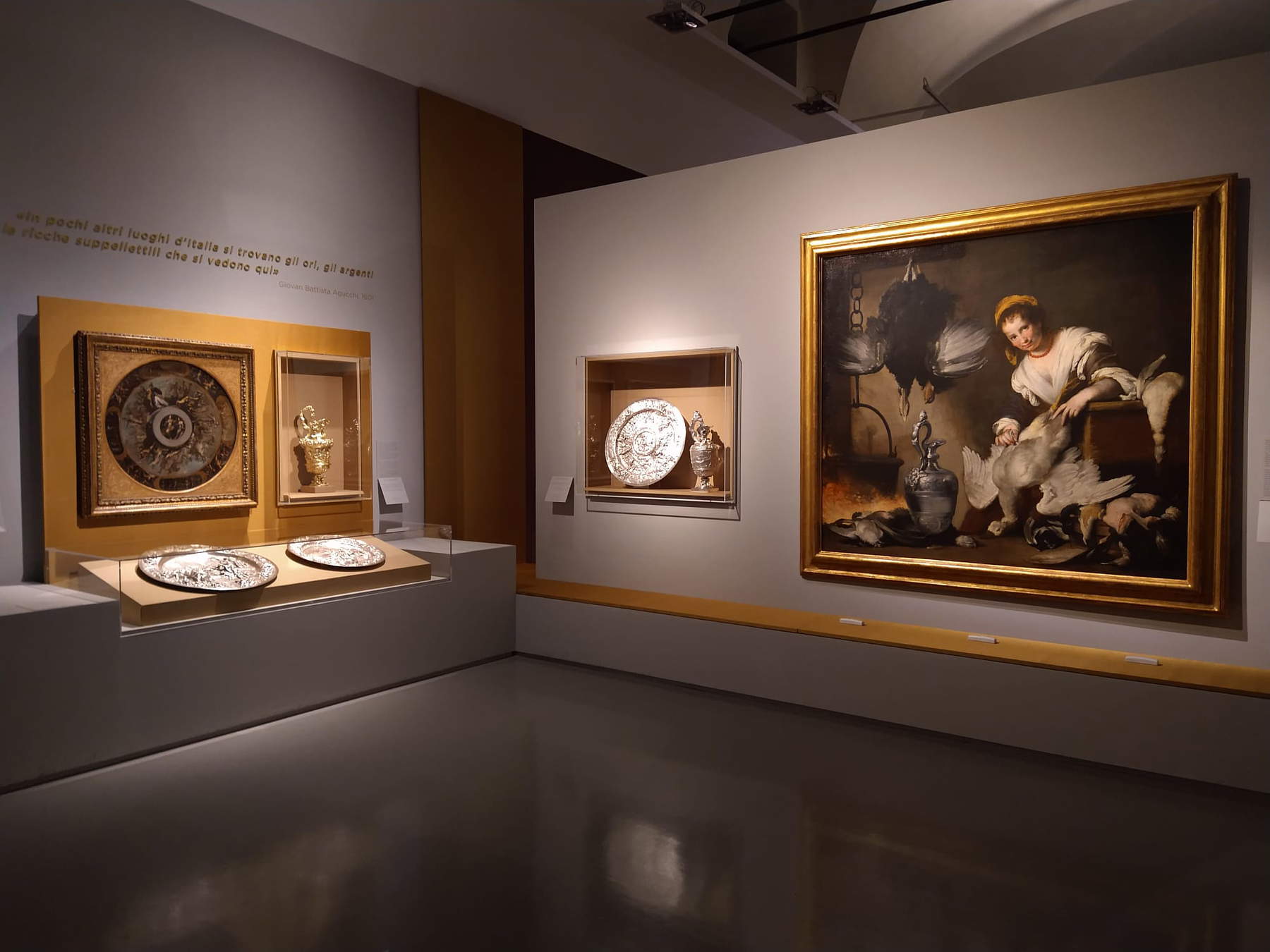

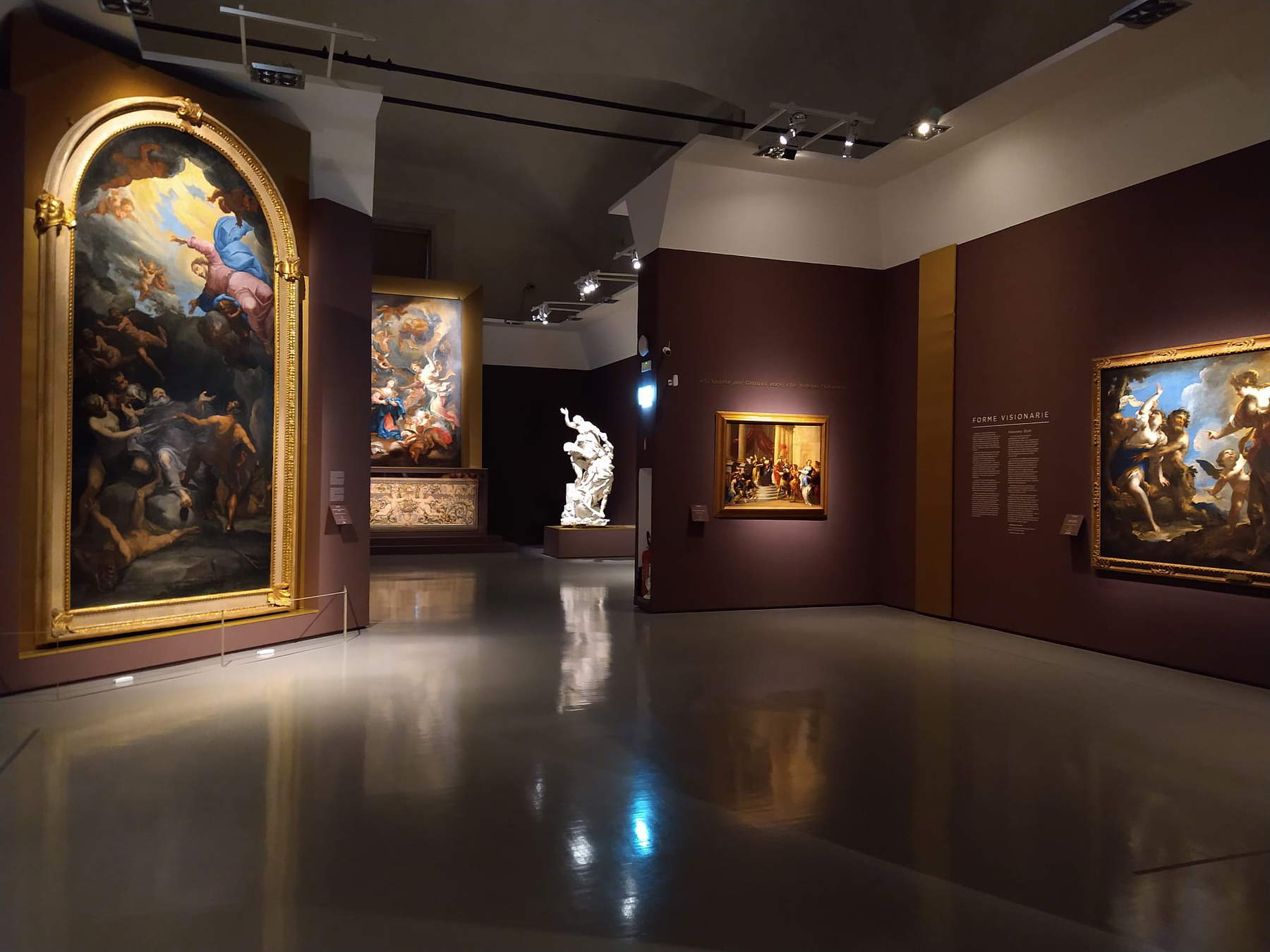
The explosive beginning of the exhibition kicks off with a room that juxtaposes two Rubens masterpieces (the Miracles of St. Ignatius from the Gesù Church and the Portrait of Giovan Carlo Doria on Horseback from Palazzo Spinola) with Orazio Gentileschi’s Sacrifice of Isaac, and two paintings, anEcstasy of Magdalene by Giulio Cesare Procaccini and a St. Sebastian being cared for by St. Irene by Simon Vouet, which immediately state where some of the works in the exhibition come from other than Genoa (i.e., from private collections, such as the painting by the Frenchman, and from the United States, such as the canvas from Washington). It is an opener that immediately communicates to the visitor one of the typical characteristics of the Genoese Baroque: the fact that it was open to the world and affected by lessons from different parts of Italy and Europe. Just as the Emilian manner of the 16th century had taken on an international dimension from the exchanges between artists active between Parma and Bologna who worked in France and the French who spread the innovations of Fontainebleau to Italy, so the Genoese seventeenth century drew lifeblood from the Flemish who stopped in the city (some of them, such as Cornelis de Wael, would later settle here), from the Caravaggesque painters passing through Genoa (Caravaggio himself, moreover, stayed in the city), from the Genoese themselves who had been in Rome and had brought back to Liguria the innovations they had learned in papal lands. The arrival of Rubens, in particular, was shocking: “the contrast with the dominant local style, which was rather abstract and homogeneous,” Bober writes in the catalog, “was really great,” so much so that “the Genoese colleagues barely knew how to react and none of them followed him in the strict sense, although in time some would assimilate specific aspects of his style.” It is true that no close followers of Rubens are recorded in Genoa, but it is also true that all of them realized, Bober continues, “the grandeur of his paintings, the dynamism and immediacy with which they struck the viewer’s senses”: the Miracles of St. Ignatius and the portrait of Giovan Carlo Doria itself are two manifestos of this whirlwind of novelty that was arriving in Liguria from Antwerp.
If the first room brings together artists from different backgrounds, but united by the fact that they were all “foreigners” (to the names listed above, it is worth adding at least that of Bartolomeo Cavarozzi from Viterbo, not present in the exhibition, who had a significant role in the diffusion of Caravaggio’s instances in Genoa, a role that was at the center of one of the in-depth exhibitions at Palazzo Spinola mentioned above), in the second room we begin to see the effect that the lesson of the foreign masters had on the local school: Two artists, Bernardo Strozzi and Gioacchino Assereto, rather distant in time, being separated by an age difference of eighteen years, are thus presented, but they well convey the reaction of Genoa to the Caravaggism imported by Gentileschi and the Ligurians who had been in Rome, starting, for example, with Fiasella from Sarzano, who was very close to Merisi in the first part of his career. The issue of the reception of Caravaggism in Genoa had been addressed in depth by a major exhibition, The Last Caravaggio, which was held in 2018 at the Gallerie d’Italia in Milan, and where both Strozzi and Assereto were present. The problem of Strozzi’s Caravaggism has filled very interesting pages of studies on the Genoese Baroque, and if Franco Renzo Pesenti included him among those who had been responsible for the “first moment of Caravaggism in Genoa,” Alessandro Morandotti, on the other hand, considered far more decisive the influence that Giulio Cesare Procaccini had exerted on the Cappuccino, while Caravaggesque manners mostly concerned external aspects. At the Scuderie del Quirinale they again insist on his “markedly Caravaggesque imprint,” also recalling the fact that Strozzi copied works by Caravaggio, however much the artist would later veer toward Flemish art. However you want to think of it, the result is a highly personal synthesis: see the Madonna and Child with St. John at Palazzo Rosso, with the still-life piece in the lower right-hand corner reminiscent of the best Caravaggio, and with the typical full, flushed figures that communicate the artist’s deep meditation on the lessons of late 16th-century Tuscan art, beginning with that of his master, Pietro Sorri. Hints of Lombard theatricality imbue the underlying Caravaggism of Gioacchino Assereto, among the most “realistic” of early 17th-century Genoese painters:Alexander and Diogenes arriving from the Gemäldegalerie in Berlin proves this, and perhaps even more so the Death of Cato that one encounters in the fifth room, a later work that suffers from the knowledge of the luministic effects of Matthias Stomer, an artist who in Genoa, still wishing to follow Morandotti, would have produced greater disturbances than Caravaggio (although Merisi’s lesson, as mentioned, was widely disseminated in Liguria by his followers).
Before looking at the forms taken by the 17th century in Liguria around mid-century, a room devoted to Antoon van Dyck, one of the most beautiful passages in the Rome exhibition, is of course a must. Of the masterpieces arriving from outside Italy, his Portrait of Elena Grimaldi and Valerio Castello’s Diana, which is encountered two rooms later, are certainly the best pieces, almost worth the entire visit. The portrait of the noblewoman, accompanied by an African page holding her umbrella, is placed in dialogue with that of Paolina Adorno Brignole Sale, with that of Agostino Pallavicino and with another symbol of Van Dyck’s portraiture, the Anton Giulio Brignole Sale on horseback, covering nearly ten years of the Flemish artist’s work, whose lesson was disruptive (virtually all seventeenth-century Genoese portraiture continued to look to him even decades later), even more so than that of Rubens: Rubens’s powerful painting was diluted by Van Dyck into more composed modes, supported by “refined drawing and smug elegance,” writes Bober, which were therefore more in keeping with local taste, for artists and clients alike. Next to Van Dyck’s works, those of Cornelis de Wael to testify to how Flanders was also looked to for genre painting (De Wael’s particularly crowded scenes turned out to be popular) and landscape painting.
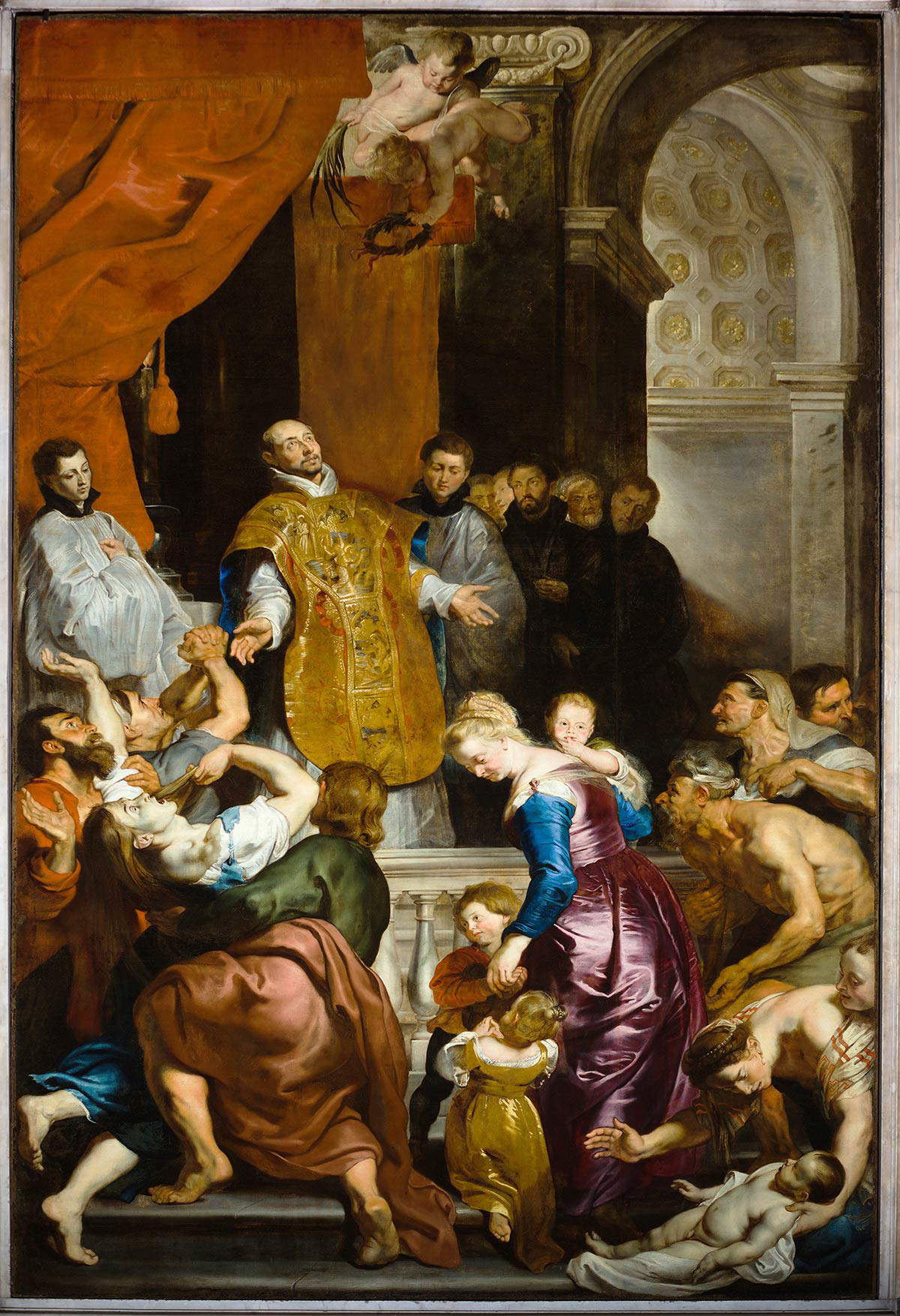
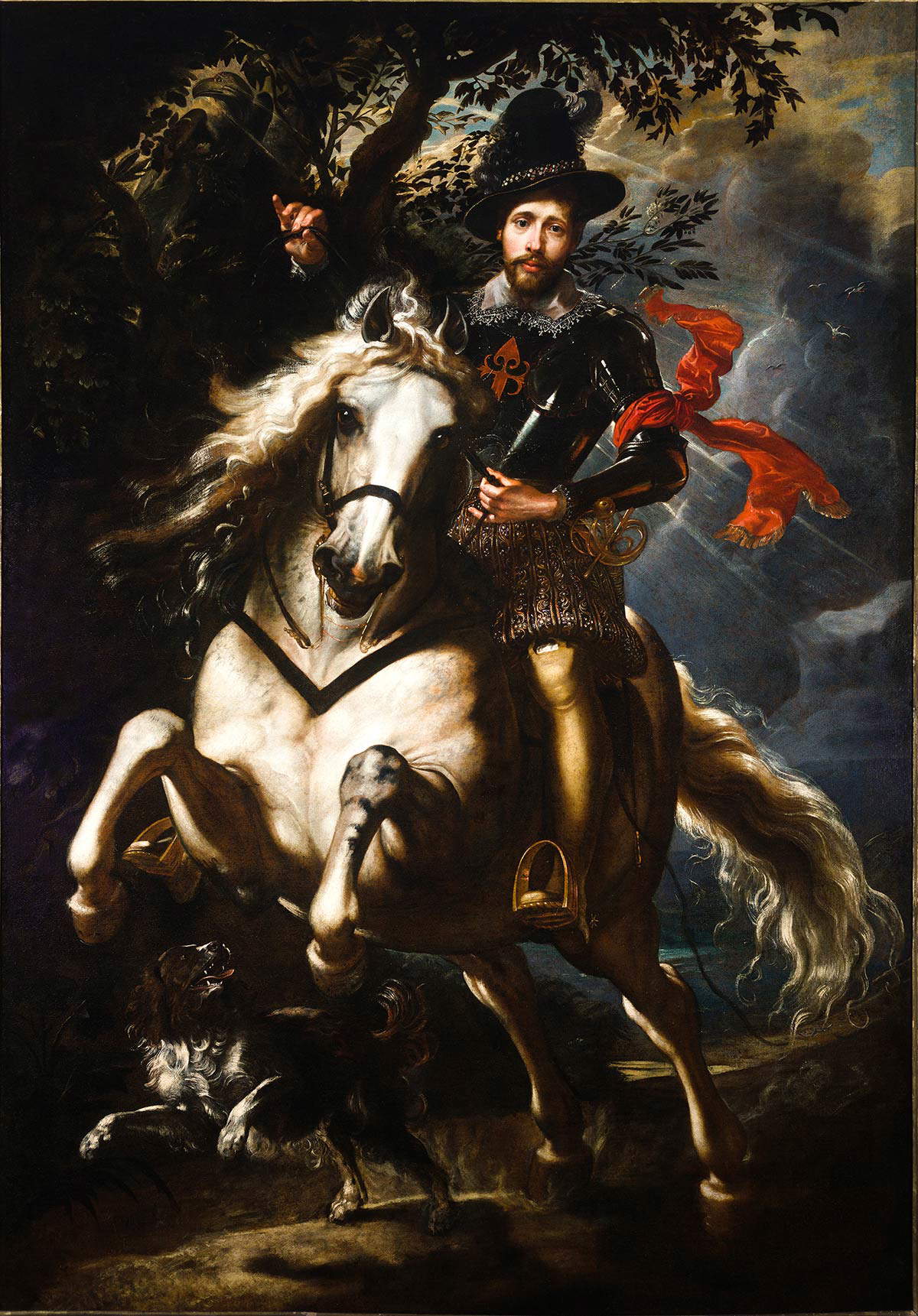
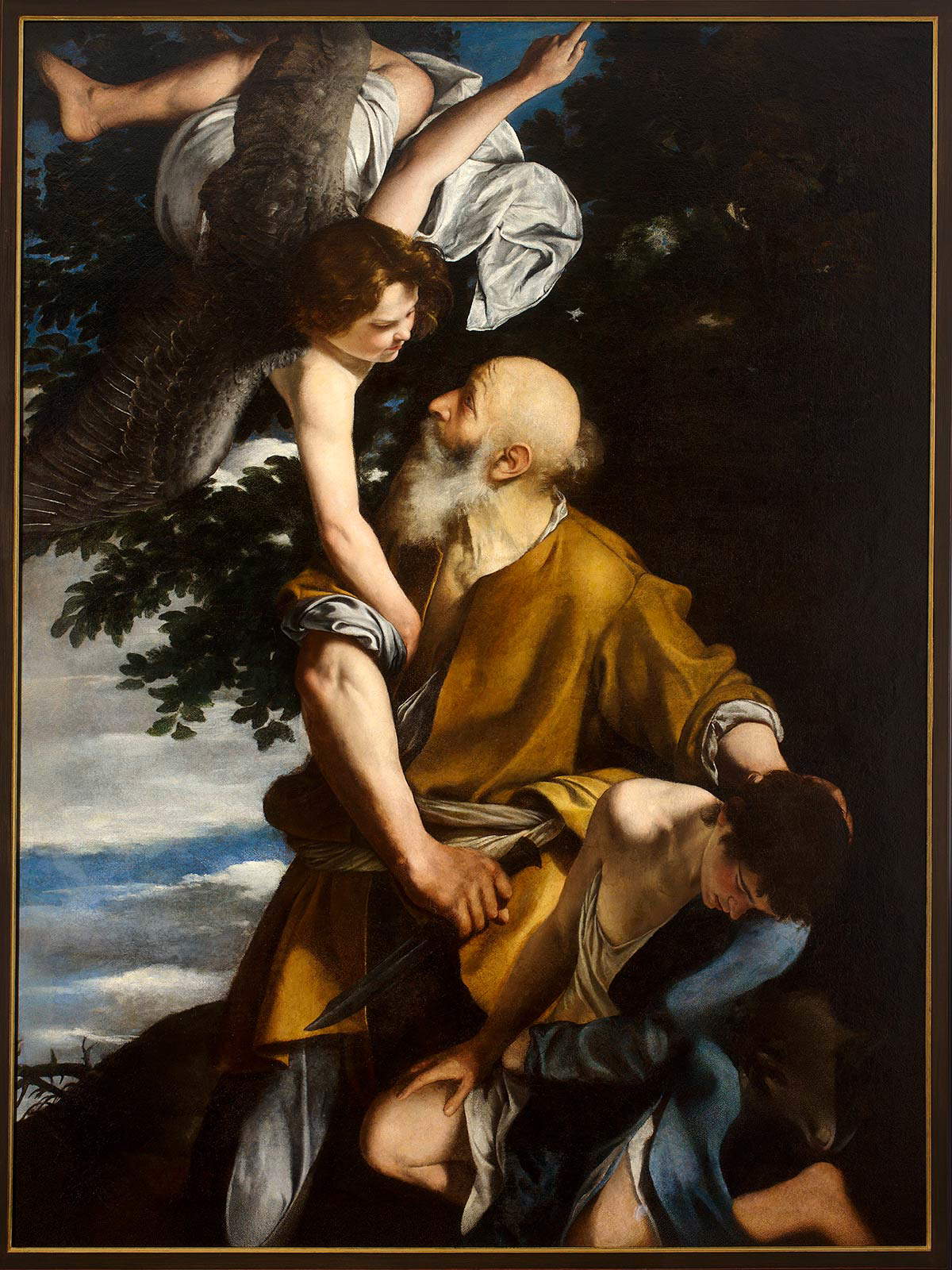
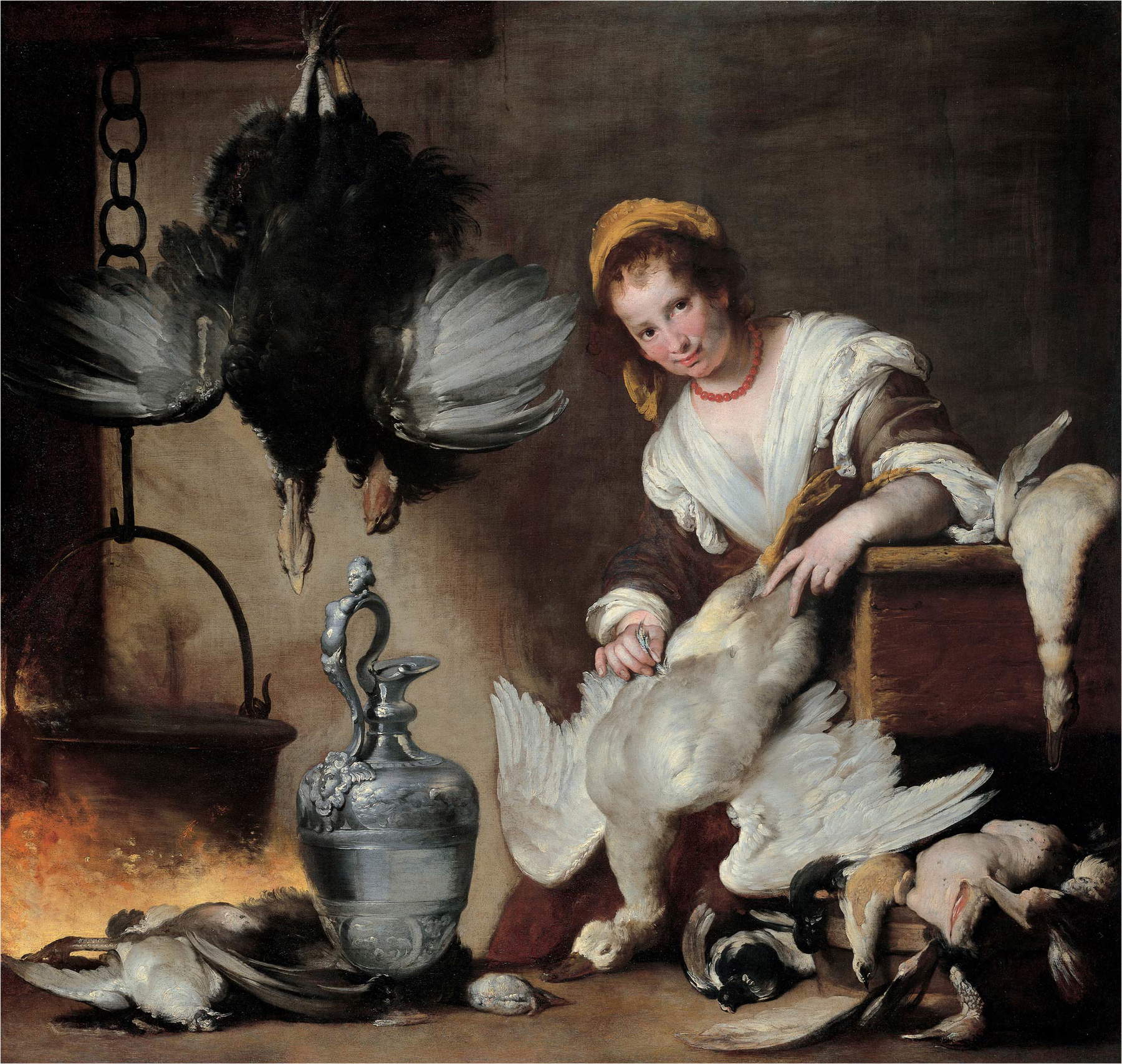
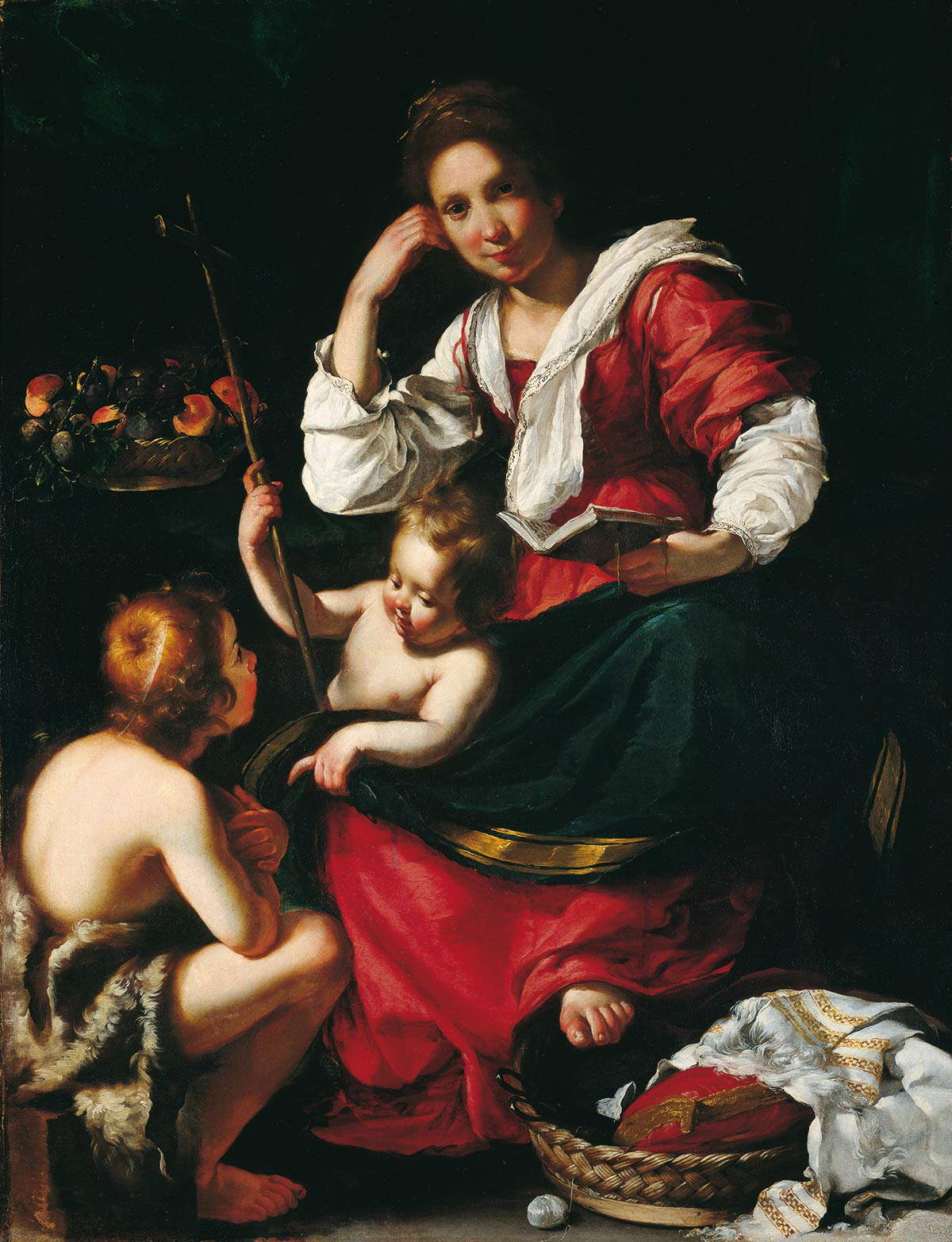


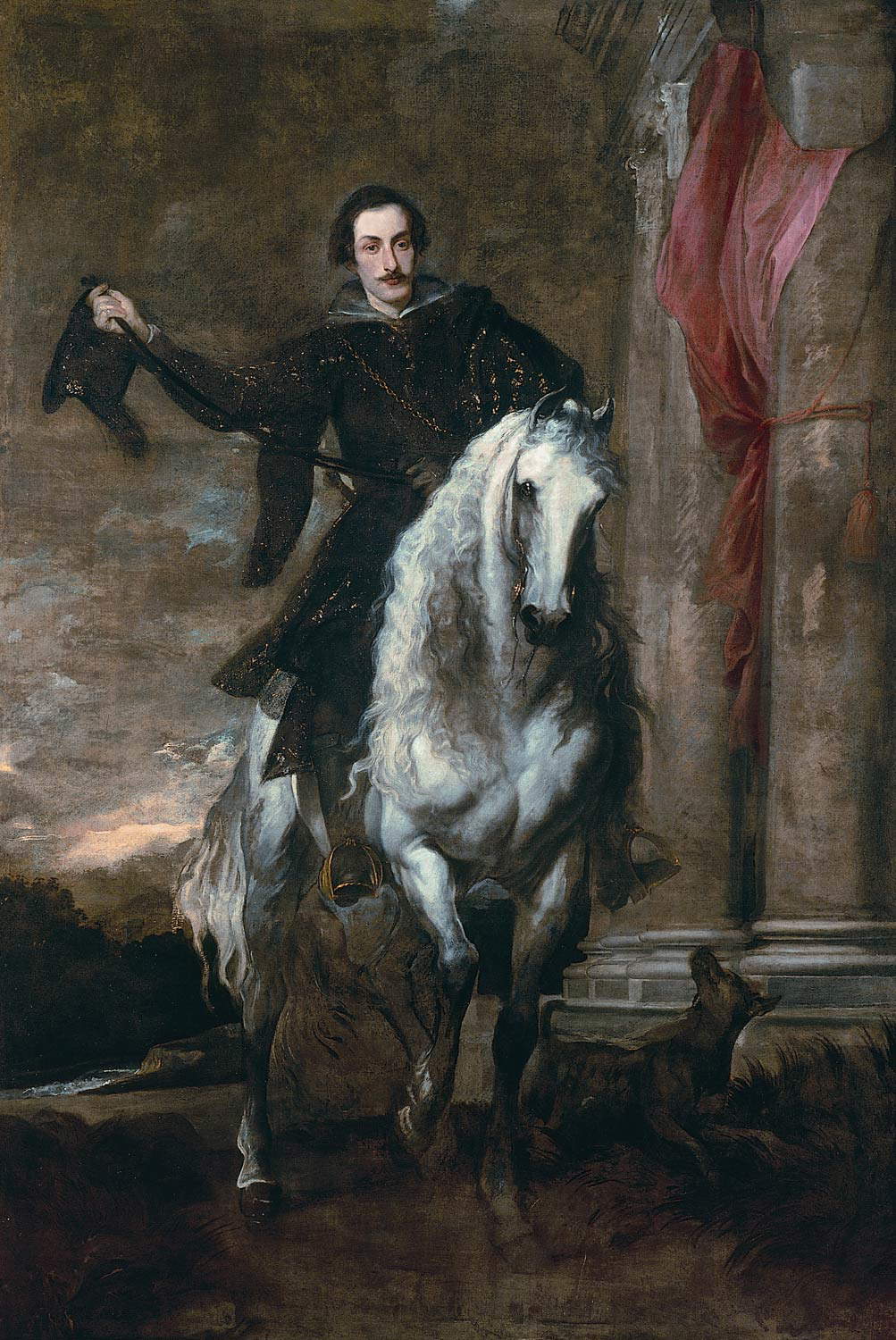
Also harking back to the typical strands of Nordic art are the still lifes, which are encountered as we continue the tour itinerary: connections between Genoa and Flanders emerge from the Dispensa of Giacomo Legi, a painter of evident Flemish origin but of whom we know only the Italianized name, whose abundance of fruit, vegetables and poultry described with extreme meticulousness leads back to the still lifes of his countryman Jan Roos, who is present with an Entrance of Animals into the Ark, and an important point of reference also for the similar Dispensation by Anton Maria Vassallo, a sort of Rubens of usialtri (he was undoubtedly, among the Genoese, the closest to the great Baroque painter) who excelled in religious and mythological themes, but who did not disdain still lifes and indeed, as the painting that arrives from the National Gallery in Washington testifies, tried his hand at this genre with great profit as well. And from Flanders would have sprung also that particular animalistic vein that seduced many excellent painters, starting with the first on the list, Sinibaldo Scorza, who in the exhibition is met on the upper floor with an astonishing pen and ink drawing from the Rijksmuseum in Amsterdam, in the small room where all the production on paper of the exhibition has been arranged and of which we will speak below, to arrive at Grechetto, or Giovanni Benedetto Castiglione who, though mostly known for his paintings with animals, was a traveling and eclectic artist, capable of producing masterpieces of great verisimilitude when it came to inserting his beloved animals in the most disparate scenes that required a conspicuous presence of beasts (exemplary is the Sacrifice to Pan with the sheep and the cow coming in from the right that look alive), but also capable of measuring himself with genres considered more challenging.
And Grechetto is the protagonist of one of the exhibition’s most intense moments, theAdoration of the Shepherds from the church of San Luca in Genoa, a true synthesis of his talent, a diagonal composition, mindful of Titian’s inventions, a tumultuous scene with Correggesque references (the Madonna and Child, a piece of extraordinary delicacy), with a swirl of angels that still looks to Rubens, with the still life insertion that a specialist like Castiglione could not omit, with the shepherd playing the bassoon and who, Bober writes, “looks like a bacchanal character.” Next to what is one of the most exciting paintings to be found in Genoese churches, parade valuable paintings that tell of the directions that the languages of seventeenth-century Genoa took in the 1930s: they range from the naturalism attenuated by classicist veins that characterizes the manner of Domenico Fiasella (theImperturbability of Anassarco) to the more essential and emotional manner of Giovanni Andrea De Ferrari (theInebriation of Noah), to the immediate and often dramatic grammar of Luciano Borzone, who grafts his Caravaggism onto a Cambiasque substratum (the Banquet of Rosmunda) and the now fully Baroque intemperance of Valerio Castello, the true protagonist of the next section.
It becomes clear at this point in the exhibition that there is no single Genoese Baroque: there are more than one. The republican structure of the Genoese state, and consequently the absence of a court, prevented the establishment of a univocal taste, and on the contrary facilitated the spread of a pluralism that has few equals, of a multitude of currents that never saw one thought prevail over the other: an extremely composite situation that was, however, at the basis of the lack of understanding that, over the centuries, did not facilitate the affirmation of the art that was being produced in the city (the reasons, however, were also others: it will suffice to think of the fact that the arts of the seventeenth century in Genoa were expressed mostly in private, the exact opposite of what happened in Rome). The proximity of Valerio Castello’s works to those of Fiasella, De Ferrari and Borzone is the most obvious image of this plurality. Valerio, a son of art (his father Bernardo had also been a talented painter), first turned his gaze backward to Parmigianino and the great frescoes of Perin del Vaga, profited from the lessons of the masters he approached (including Fiasella and De Ferrari themselves), and modeled himself on the power Rubens and the light of Van Dyck to produce some of the most exuberant and visionary works of his time: his art, as seen in the splendid Diana and Actaeon with Pan and Syrinx arriving from West Palm Beach, is a mixture of movement and refinement, of great compositional freedom and moments of delicate sweetness. His is one of the most revolutionary languages of the time and would take root on many colleagues: evidence of this is, for example, Bartolomeo Biscaino’sAdoration of the Magi. The visit to the first floor concludes with another dense moment: we move from the peculiar figure of an isolated painter, in many ways yet to be discovered and understood, who is Giulio Benso, present with the singular, whirling, imaginative and unconventional Temptations of St. Anthony from Pieve di Teco, a difficult painting animated by a “genuine spirit of contradiction” (so Franco Boggero), to the works of Domenico Piola, who became the leader of the Genoese school after the plague of 1656 that halved the city’s population, also wreaking havoc on artists (among them Valerio Castello himself) and whose art knew several seasons (on display a youthful canvas, Job and His Children, and a masterpiece of his maturity, theAnnunciation from the Basilica del Vastato), to the first great sculptor of 17th-century Genoa, the Frenchman Pierre Puget, who brought to Liguria the novelties of great Roman Baroque sculpture, appreciable in The Rape of Helen.



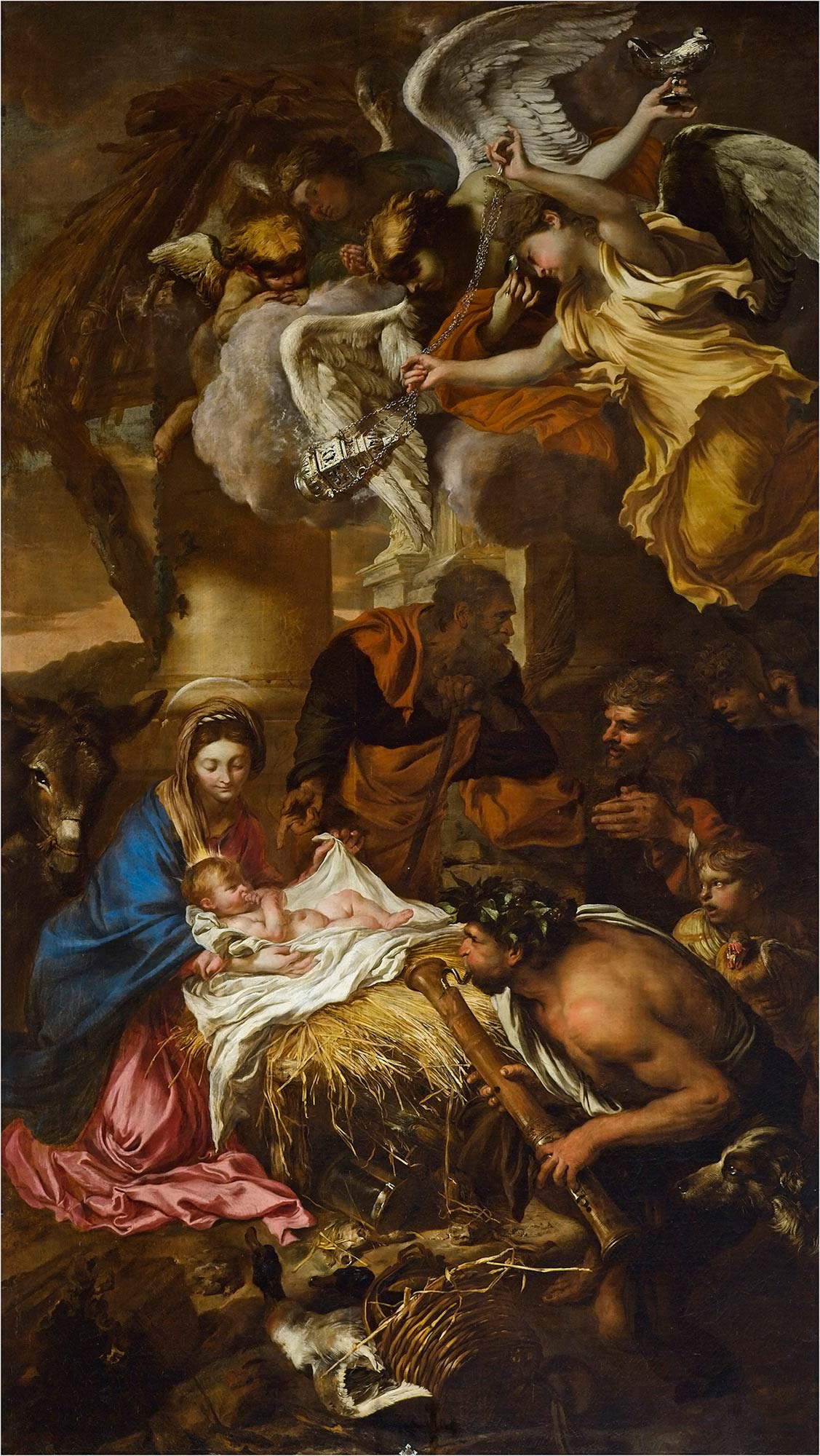
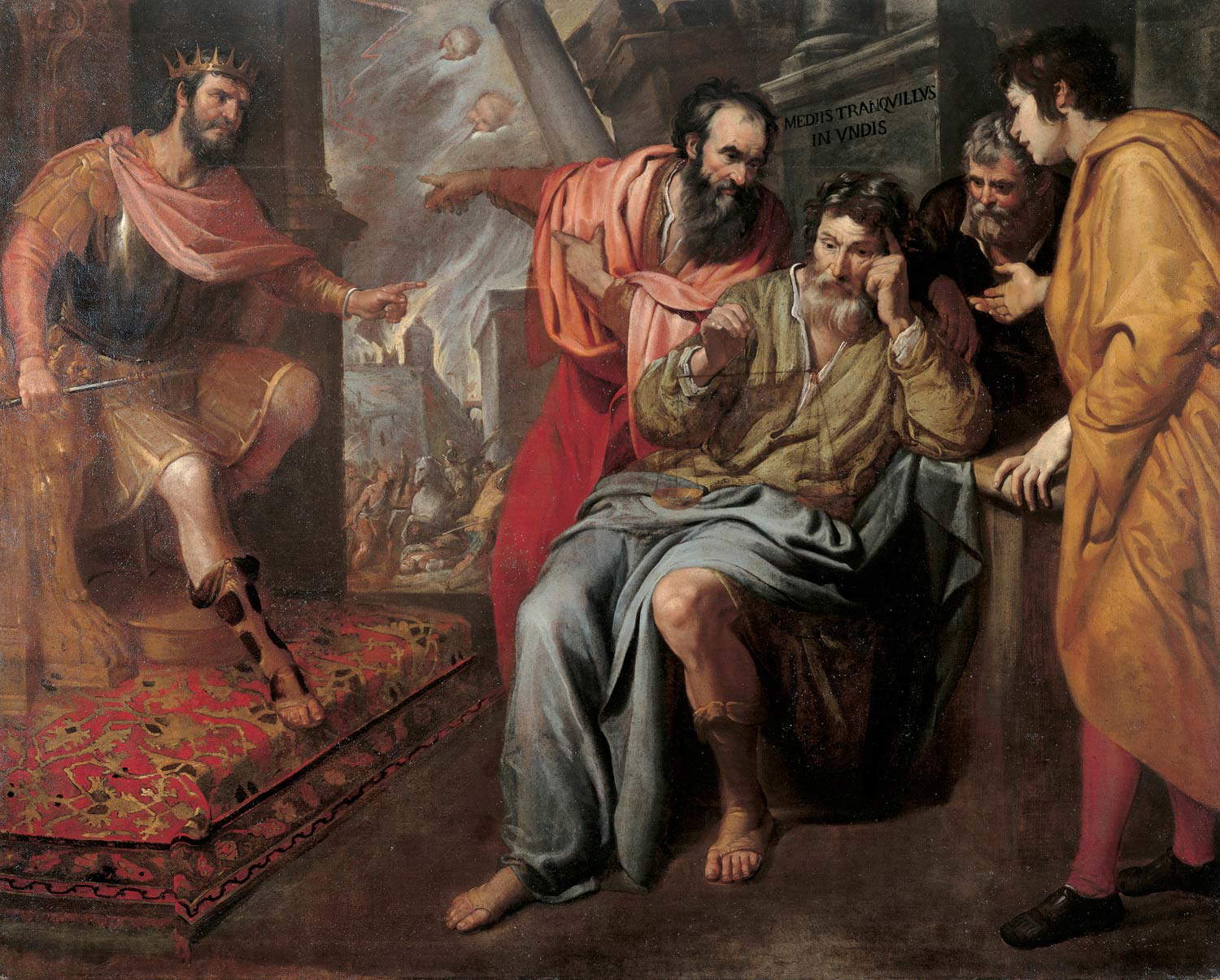
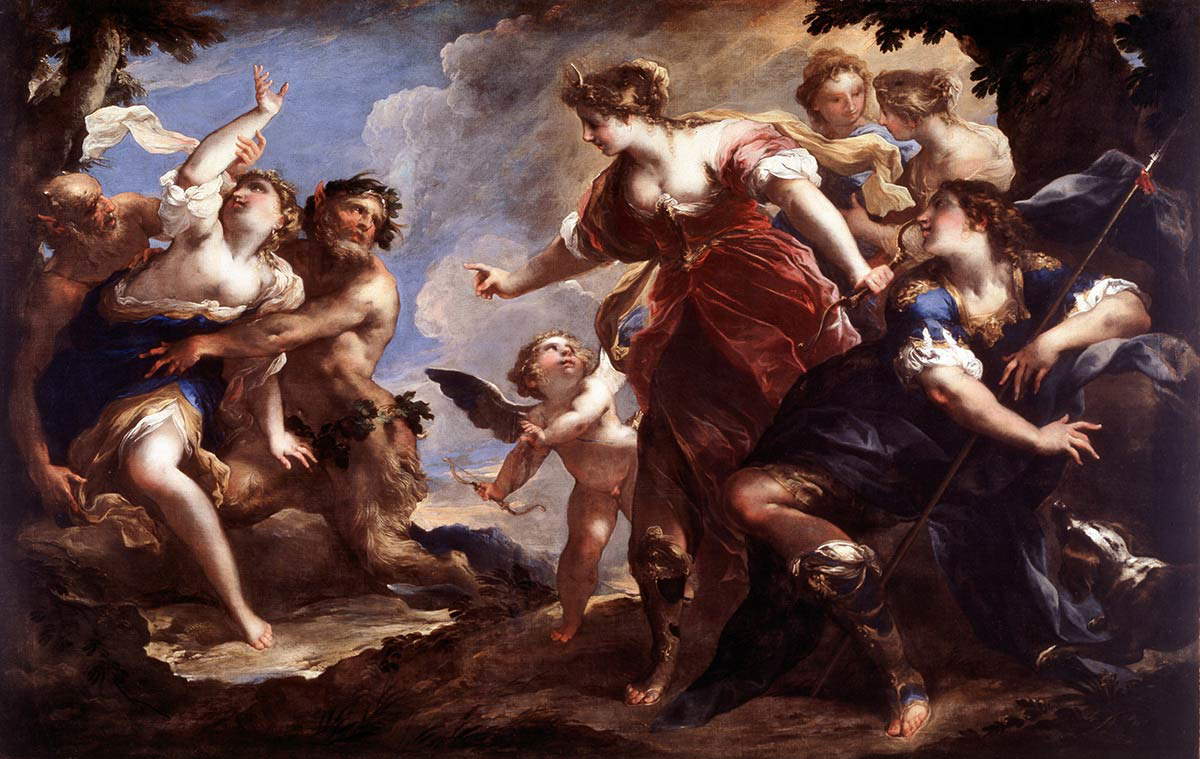
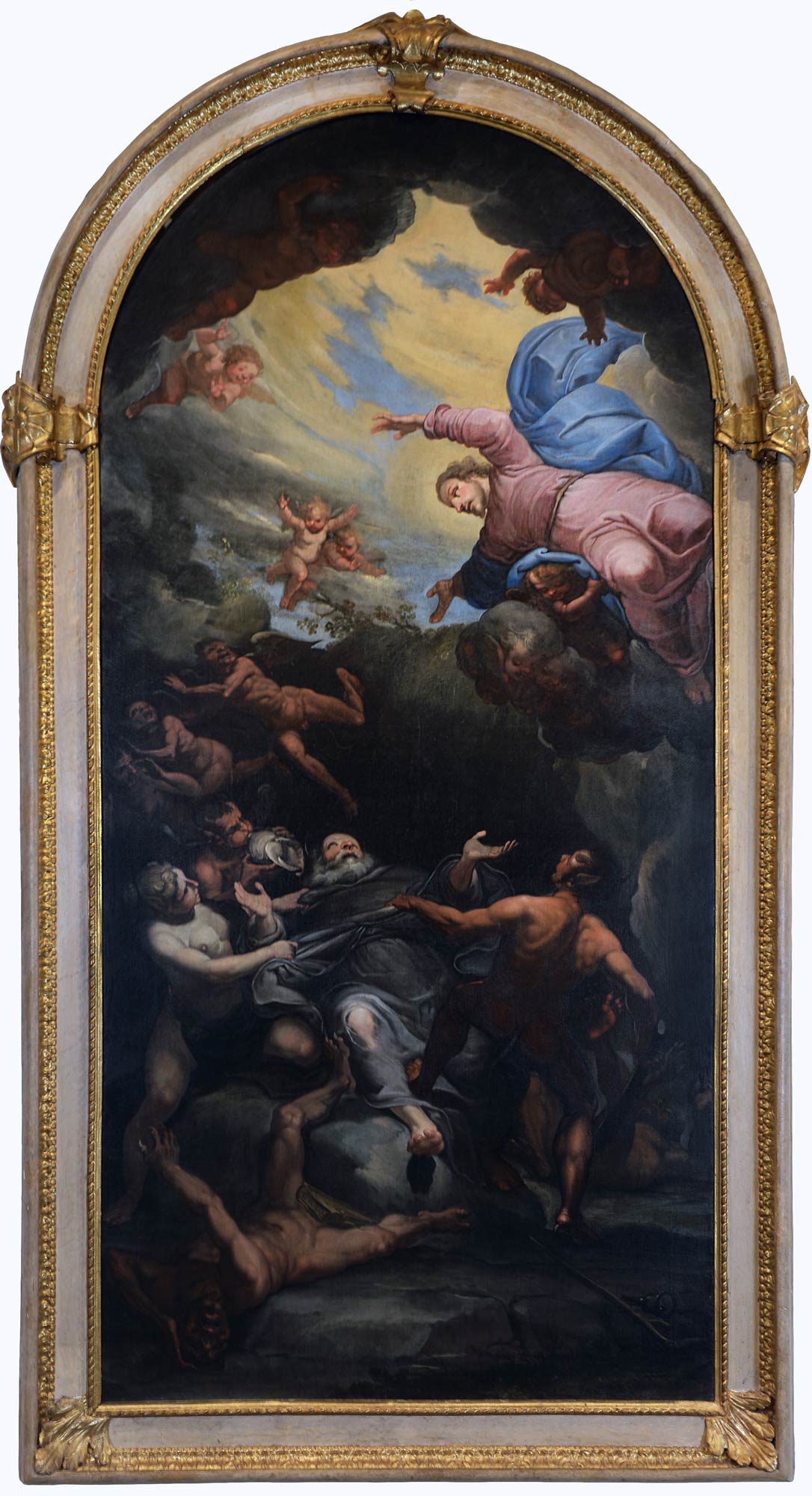
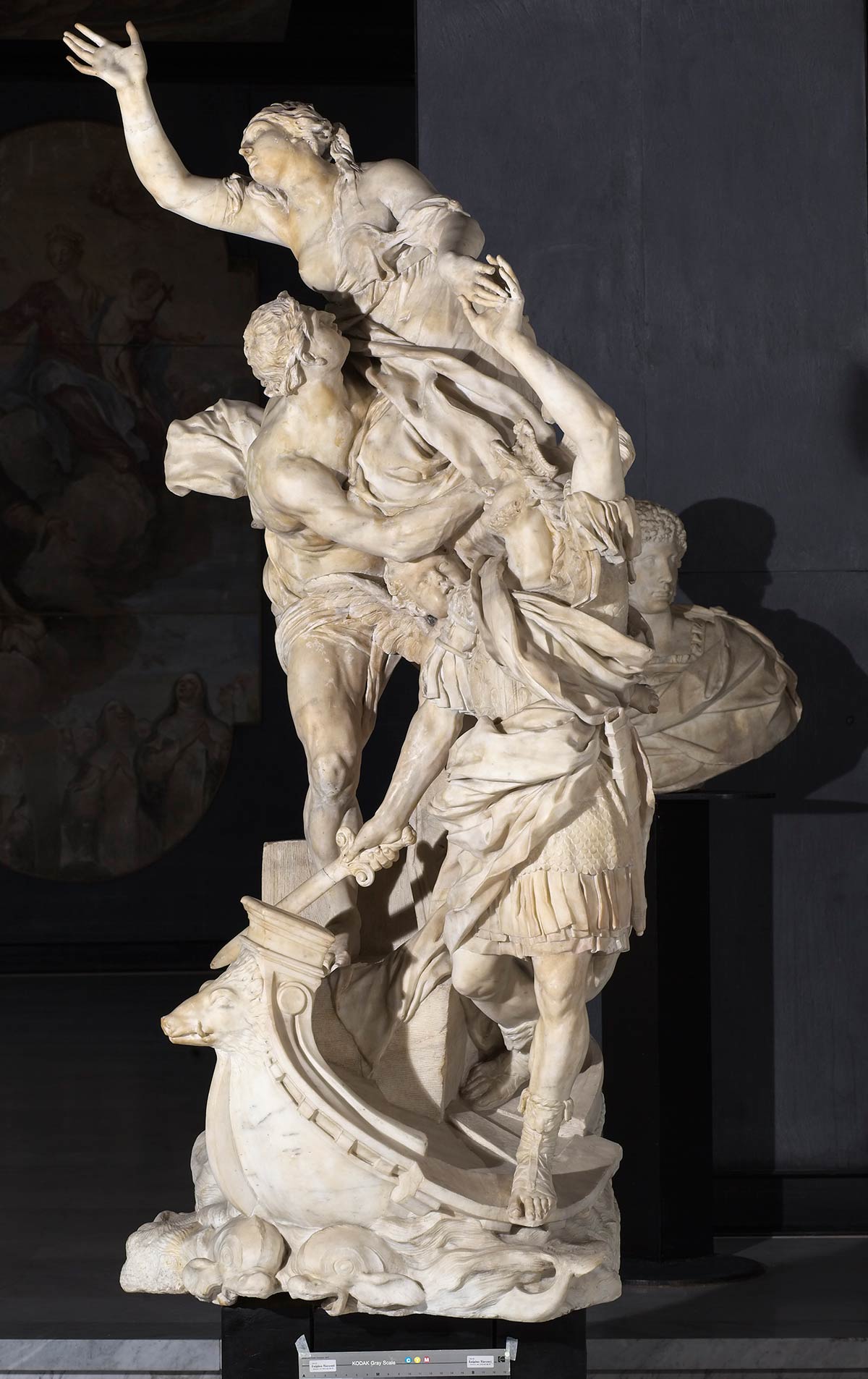
Going up to the upper floor, in the first room we meet one of the most interesting and perhaps most neglected protagonists of the second Ligurian seventeenth century, Bartolomeo Guidobono from Savona, who began his career as a ceramist but was then able to distinguish himself as an admirable painter. Suffice it to admire two works arriving from Palazzo Rosso, Lot Drunk by his Daughters and Abraham Convites the Three Angels, which the historiographer Carlo Giuseppe Ratti considered to be among the paintings “de’ migliori ch’ei mai facesse,” believing that the such strong chiaroscuro contrasts and light effects made them equivocal for works by Guercino, “so much are they with strong and vigorous impasto adombrati.” Guidobono’s very particular synthesis, which assimilates “Correggio’s grace and sensuality” (so Raffaella Besta) in the depiction of Lot’s daughters and Abraham’s angels, reminiscences of the early 17th century Veneto and “a specific interest in Castiglione , in a sort of stylistic affinity with all those painters, first and foremost Rubens, who rework the coloristic tradition in a Baroque sense,” would later, at the turn of the century (see the Zephyr and Flora) flow into a painting with more delicate tones that already anticipates the 18th century. The next room does not lack a taste of sculpture: one of the many machines of the real, a great champion of eighteenth-century wooden sculpture in Liguria, or Anton Maria Maragliano, to whom an important monographic exhibition was also recently dedicated in Genoa, at the Teatro del Falcone in Palazzo Reale, stands out in the center of the room. It is the Baptism of Christ on loan from the Oratory of St. John the Baptist in Pieve di Teco, one of the many churches on the two Ligurian rivieras where Maragliano’s processional groups can be found: around it, works by Pierre Puget, Alessandro Algardi and Domenico Guidi line up the names of those who renewed local sculpture, long lagging behind painting.
It has been anticipated above that a special room has been devoted to the graphic production of the Genoese painters of the seventeenth century: it is here that the public can observe some preparatory sheets for the great frescoes that continue even today to astound visitors to the Palazzi dei Rolli. The Genoese Baroque, it has been said, was after all a primarily private phenomenon, and it is among the houses of the city’s aristocracy that some of the high points of this season must be found: sketches and drawings at the Scuderie del Quirinale let the visitor imagine the splendor of these sumptuous mansions (it is worth mentioning, moreover, the essay that Giulio Sommariva dedicates to the image of Genoese palaces in the catalog), although there is no shortage of sheets unrelated to this type of activity, however, and the magnificent drawing by Sinibaldo Scorza mentioned above is perhaps the best example in this sense. Not only sheets, but also models: there are, for example, those by Giovanni Battista Carlone for the San Siro frescoes, which occupy almost an entire room. There is the rapacious Apotheosis of the Republic of Genoa, a sketch by Domenico Piola for the fresco intended for the Sala del Maggior Consiglio Ducale in the Ducal Palace, eposted together with that executed by his son Paolo Gerolamo. There is Gregorio De Ferrari’s sketch for the Summer Solstice at Palazzo Rosso: this is also how the charm of one of Genoa’s most beautiful residences reaches Rome. And in an ideal connection between Genoa and Rome there is also the model for the Triumph of the Name of Jesus in the Church of the Gesù in Rome, a short distance from the Quirinal: its author, it is known, is a Genoese, that Giovan Battista Gaulli who, devastated by the plague of 1656 since he lost his whole family there, decided to leave the city immediately and go to Rome, never to return to his homeland. The Triumph of the Name of Jesus, inconceivable without the previous experiences of Piola and Castello, although it can be considered the pictorial counterpart to Bernini’s sculpture, is a kind of piece of Liguria in Rome.
Past the room devoted to the “sumptuous baroque” of the early eighteenth century, with works of the highest quality by Paolo Gerolamo Piola of Maratt and Domenico Parodi and Mulinaretto, the latter artists already looking beyond the Alps after Genoa entered the sphere of influence of France, one admires a landscape by Carlo Antonio Tavella and arrives at the epilogue: the room dedicated to the “unpredictable” Alessandro Magnasco, a free, nonconformist, bizarre, independent artist, far from any scheme and therefore difficult to pigeonhole. A Genoese by birth, he actually spent most of his existence in Milan and was nourished by the most varied sources: he looked to the local tradition, to the bamboccianti, to Salvator Rosa, to Giuseppe Maria Crespi, to the Venetians, and the result was a painting without equal, so rapid as to appear almost improvised, made up of darting brushstrokes, barely hinted at figures, and convulsive compositions. Typical of his modus operandi is St. Augustine and the Child, a work executed four-handedly with the landscape painter Antonio Francesco Peruzzini, where the motif of the stormy sea that is encountered in many of Lissandrino’s works returns, and where the figures of the two protagonists, tiny compared to the landscape and almost anticipatory of the taste for the sublime, show themselves with that almost sketchy immediacy that distinguishes Magnasco’s language. The real masterpiece, however, is Trattenimento in un giardino di Albaro, an exceptional loan from Palazzo Bianco, which closes the exhibition: as the centuries-old history of the Republic of Genoa drew to a close, Magnasco painted a reception of nobles on the hills of Albaro, in an oppressive view towards the plain of the Bisagno, where the sea cannot be seen, but one can clearly distinguish these little figures of aristocrats who, like spectral and unaware comedians, are meeting their final demise.
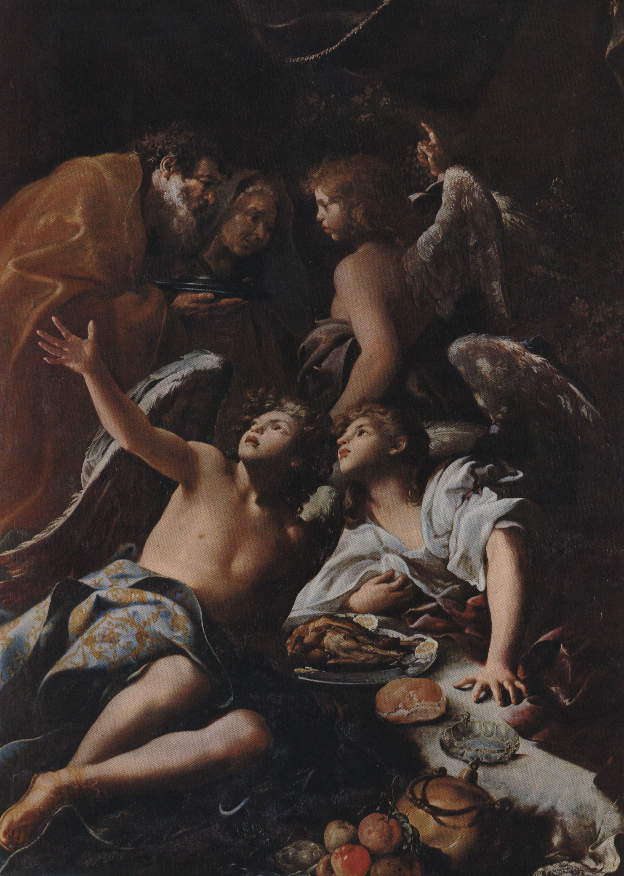
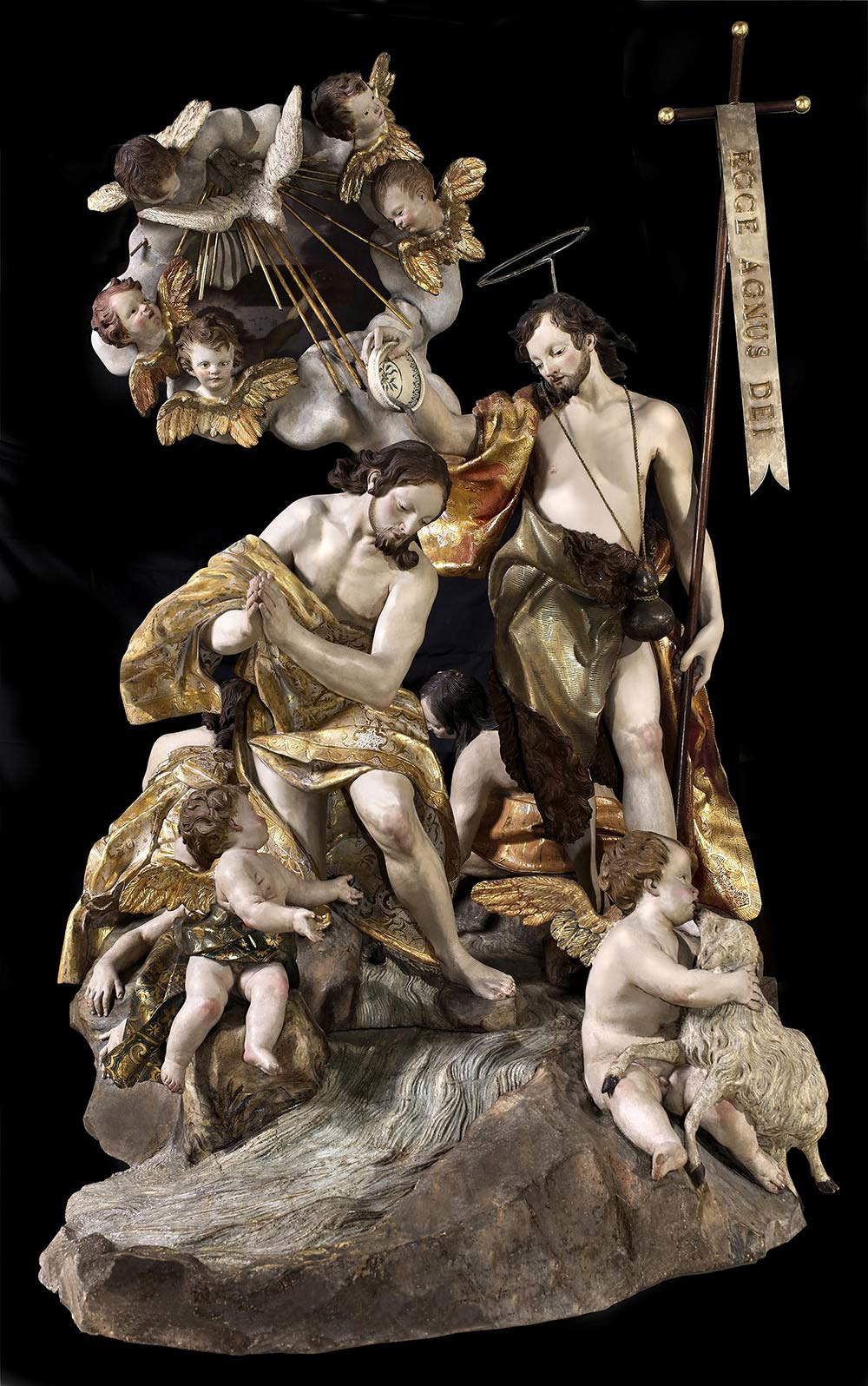
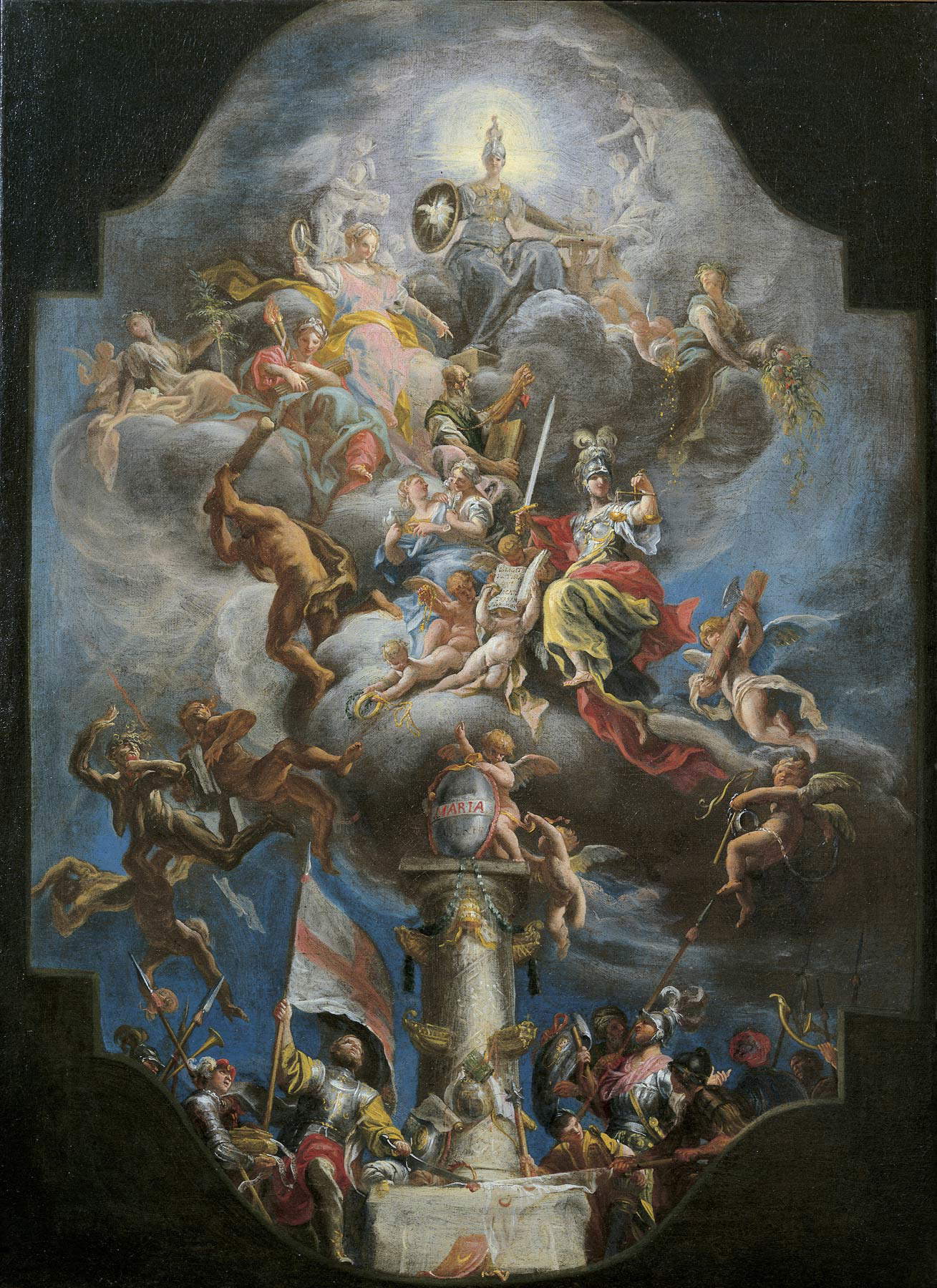

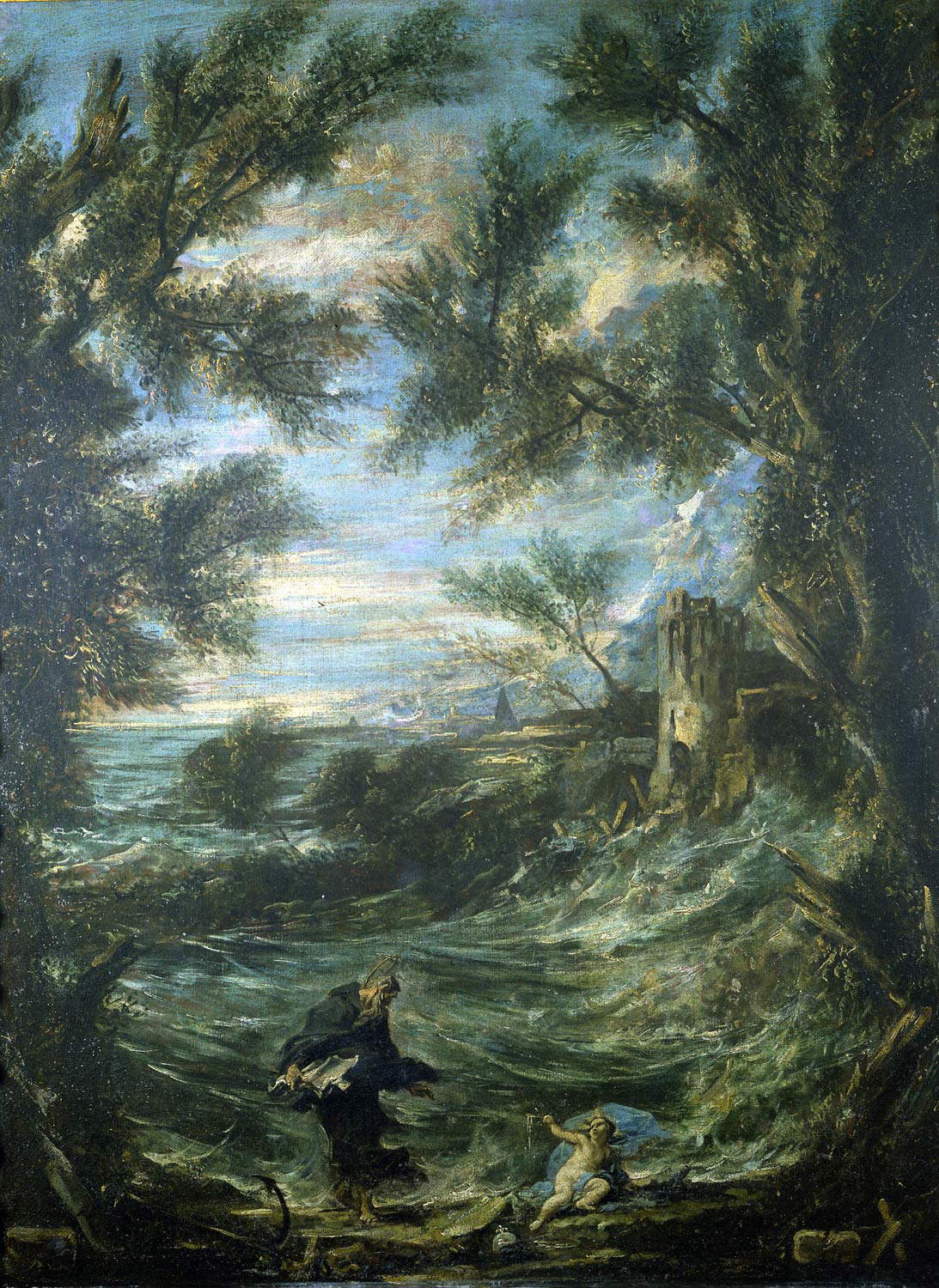

Accompanying the exhibition is a libellus of the “Fifty Superb Words,” which is distributed free of charge to the public at the ticket office, and which provides a broader idea of the context that produced such a polyphonic Baroque as that of Genoa: the booklet in fact contains small abstracts on the social, cultural, economic and financial realities that characterized the Republic of Genoa during the period of the exhibition, and which are further examined by Andrea Zanini in the opening essay of the catalog, a contribution that is read with pleasure for the amount of interesting historical information it manages to convey. It would be impossible to understand the seventeenth century in Genoa without understanding what was happening in the territory of a Republic that, squeezed between the Apennines and the coasts of the Ligurian Sea, poor in resources and raw materials due to the geography of an impervious and stingy territory, was able to base its wealth first on maritime traffic and then, when the routes of world trade shifted from the Mediterranean to the Atlantic Ocean, on finance and the processing industry, first and foremost that of silk. In this context acted that “active and enterprising patriciate” (so Zanini) capable of intervening in various sectors of the economy, shrewd enough to understand that certain forms of welfare state were indispensable for the republic’s well-being, while a shrewd foreign policy of balance and neutrality was for its survival. The “Civilization of Palaces,” as Ennio Poleggi had called it, which was filled with those works of art that would make the Genoese Baroque alive, is the most eloquent image left to us today of that historical period.
Finally, the catalog is a highly effective tool that condenses into five useful and concise essays the state of the art on the period the exhibition examines: Zanini’s contribution just mentioned and the one on seventeenth-century architecture by Sommariva quoted above are flanked by those on the relationships between artists and patrons, a four-handed contribution by Boccardo and Boggero, a dense essay on the economic and labor status of artists in the Republic of Genoa by Peter Lukehart, and a summary essay on “Genoese Baroque styles” signed by Jonathan Bober. The careful entries do not contain bibliographical abstracts, but are dense with notes that refer to the general bibliography: note that those of the better-known works prefer to focus on some peculiar aspects, and for the more general or better-known ones they refer to past publications, quoted extensively and collected in the rich registry that concludes the volume. For Genoa, ultimately, Superbarocco is a project of great value as well as an important opportunity to promote itself. For the public of Italy and of the world, it is the first time in exactly thirty years that most of the pearls of that season have been reunited in a place other than their city, in an exhibition that starts from what was acquired in the 1990s and crosses three decades of intense and widespread research to bring to the Quirinale an updated and high-level itinerary. With the twofold objective of making the Genoese seventeenth century known to as many people as possible, and of encouraging further and even more widespread continuation of studies on the subject.
Warning: the translation into English of the original Italian article was created using automatic tools. We undertake to review all articles, but we do not guarantee the total absence of inaccuracies in the translation due to the program. You can find the original by clicking on the ITA button. If you find any mistake,please contact us.